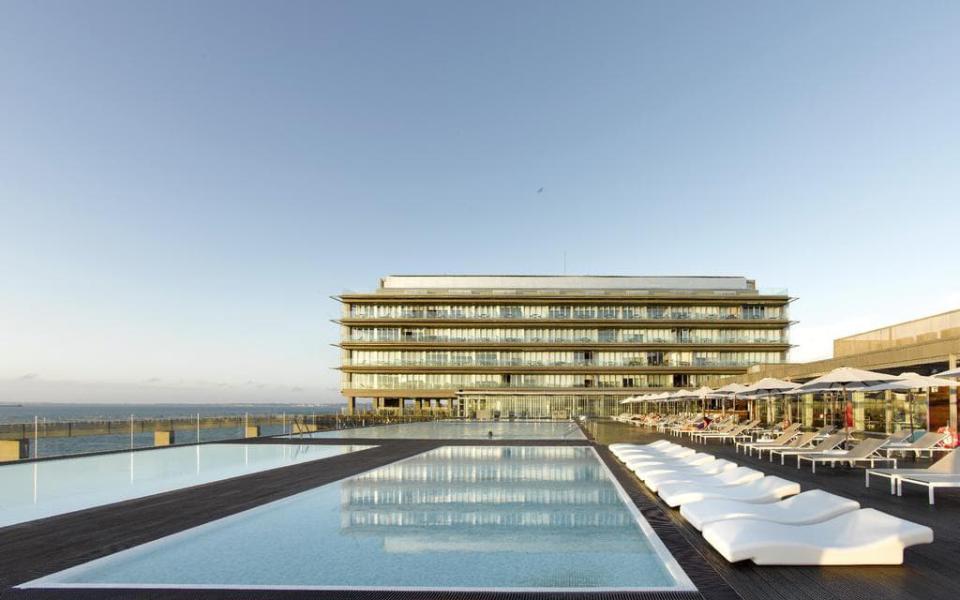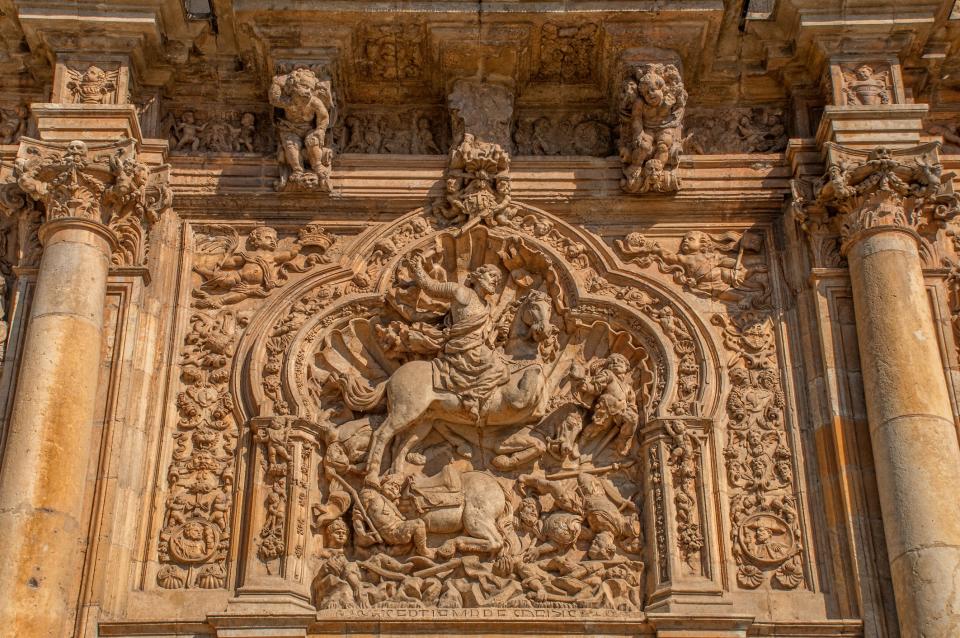Spain's parador hotels – the country's best-kept secrets – are back in business

In a sure sign that the Spanish tourist industry is finally back in business after its three-month shutdown, all 95 of the Paradores Nacionales have reopened their doors.
Occupancy rates across the state-run chain of hotels, often located in buildings of historic interest or at sites of outstanding natural beauty, are said (by the company) to average 76 per cent since the reopening last Friday. Additionally, a brand new Parador has just opened in the Galician coastal town of Muxia and is fully booked for the rest of the summer.
However you measure it, Spain’s Paradores Nacionales must be counted one of international tourism’s bigger success-stories. Originally mooted in 1910, when the idea of tourism itself barely existed, the chain was founded in 1928 after King Alfonso XIII decreed the building of a hotel in the Sierra de Gredos, one of the monarch’s favourite hunting-grounds. The Civil War and post-War slowed down the project, but during the decade of the 1960s the total number grew rapidly from 40 to 83. There are now Paradors in each of Spain’s 17 ‘autonomous communities’ with the exception of the Balearic Islands – though this will be remedied when the long-gestated Parador Nacional finally opens (it’s slated for 2022) in a castle at the top of Ibiza town.
Over their near-century of history the Paradors have become part and parcel of travel in Spain. The first time I myself stayed in one – a Renaissance palacio in golden stone in the charming Andalusian town of Úbeda – was an eye-opening experience. I was a backpacking student splurging on a good hotel after weeks of cheap hostels on the Costas. Arriving at the Parador felt like a dose of the real Spain with all the wealth of its cultural heritage.

I must have stayed in 20 or 25 Paradors since then, and I’m still a fan. One of the chain’s most attractive features has always been its eminently reasonable pricing policy. Some work better than others, and of course I have my favourites. The great Hostal de las Reyes Catolicos in Santiago, almost overwhelming in its Gothic majesty, might be top of anyone’s list. But both Plasencia (Extremadura) and Santo Estevo (Galicia), gorgeous restorations of sprawling old convents, run it close. And I have a soft spot for Oropesa, a proper Game-of-Thrones castle just a mile off my route home from Madrid and a perfect motorway stop for a cold drink in the bar.
The Parador de Granada is an extra-special case. Not only is it romantically accommodated in a 15th-century convent with arabesque decoration, but a major privilege of staying here is that you get to sleep within the grounds of the Alhambra, and enjoy the fragrant gardens after the crowds have gone.

Though the great majority are housed in palaces, castles, and noble country houses, recent years have seen a trend for spectacular new-builds by top-drawer architects – examples being the glittering steel-and-glass box beside the sea in Cádiz and the contemporary ‘revitalisation’ of a 16th-century building by cutting-edge firm Aranguren & Gonzalez-Gallegos in Alcalá de Henares. The new parador at Muxia, a low-lying structure encrusted in a verdant hillside with views of cliffs and ocean, also strikes a defiantly modern note. Over the years I’ve seen the chain’s default interiors for its historic properties – the dark and clumpy faux-Castilian furniture, the wooden ‘throne’ armchairs, the black ironwork lamps like something out of an 1930s movie starring Errol Flynn – give way to a much lighter classic style.

The Paradores Nacionales are all things to all travellers. Especially if it’s their first time in Spain, it’s not unknown for clients to organize their itinerary entirely around the network. (There are even Parador ‘super-fans’ who have ticked off every one of the 95 hotels.) Many are persuaded by their trust in the brand to visit places they might not otherwise have considered. My stay at the magical Parador de Corias, a monastery complex in fine grey marble dating from the 11th century, introduced me to the deep green world of south-west Asturias with its tracts of wilderness where bears still roam.
The Spanish love them, too. When a new one is announced in a given city it’s a matter for rejoicing. The arrival of a Parador single-handedly puts a place on the map (how else would we ignorant foreigners have heard of Alcañiz, Hondarribia or Aiguablava?). Apart from giving new life to historic buildings that would otherwise lie derelict, Paradors are known to bring in jobs. Bars and shops spring up in their vicinity – which is often a lifeless old-town district in need of a boost. Once up and running, they take their place in the city’s social life. When a friend comes visiting, the Parador is a natural stop on your proud tour of the town. The big Parador wedding is a Spanish classic; so is the visit with an elderly relative for coffee on a Sunday afternoon.

Reasonably-priced lodgings in superbly restored historic buildings: what’s not to like? Well, there are a few things I could mention. State-run entities aren’t known for their silky-smooth service, and I sometimes detect a bored or haughty demeanour in the uniformed Parador staff. The standard of food at the restaurants has been a common cause for complaint, but is now much improved thanks to a new emphasis on the local cooking, and local wines, of wherever the property happens to be.
At a time when hotels worldwide are staring financial ruin in the face, the reopened Paradors are a reason to be cheerful. Well positioned to tackle the challenges of post-pandemic travel, most of them are located either in deep countryside or in quiet parts of town, well away from the pulsing circuits of mass tourism. They are also relatively small hotels that can easily adapt to the new rules on hygiene and safety.
Here are five picks with some availability in the coming weeks. (Prices not including breakfast.)
Parador de Cádiz
Standard double room from 253€ in July.
www.parador.es/en/paradores/parador-de-cadiz
Parador de Oropesa
Standard double room from 75€ in July.
www.parador.es/en/paradores/parador-de-oropesa
Parador de Santiago de Compostela
Standard double room from 165€ in July.
www.parador.es/en/paradores/parador-de-santiago-de-compostela
Parador de Alcalá de Henares
Standard double room from 95€ in July.
www.parador.es/en/paradores/parador-de-alcala-de-henares
Parador de Granada
Standard double room from 190€ in July.
www.parador.es/en/paradores/parador-de-granada
A special promotion (‘Veraneadores’) at selected Paradors offers rooms from 65€ a night (until 31st July).

